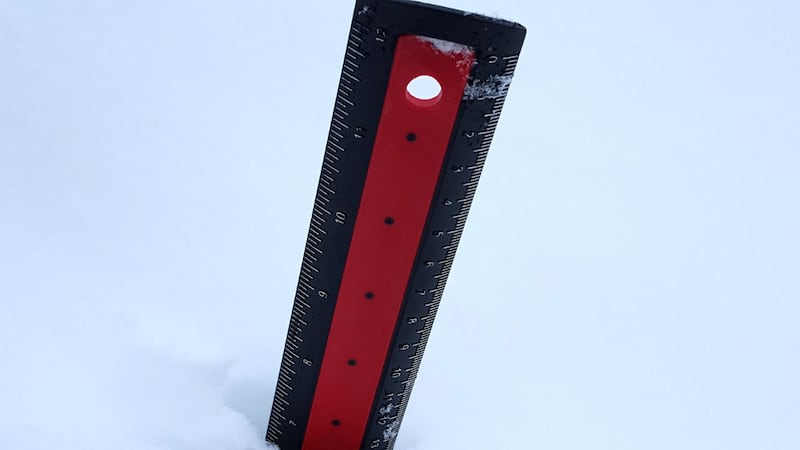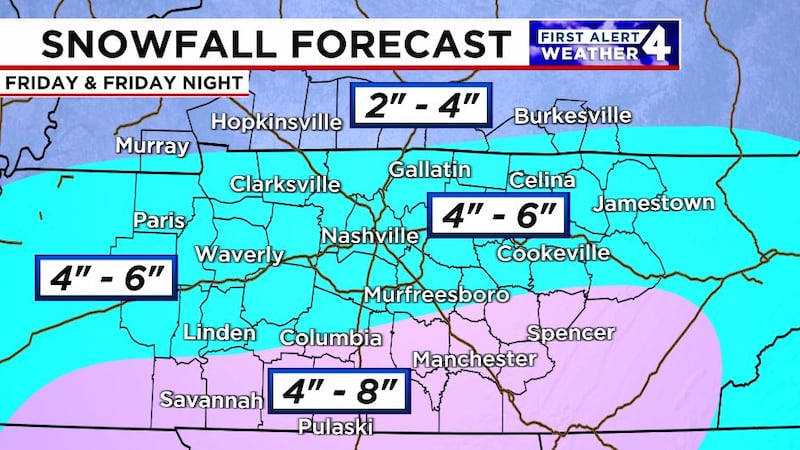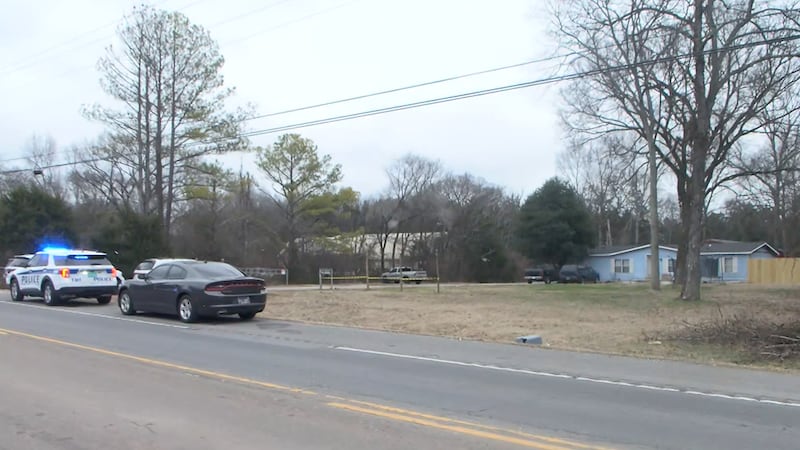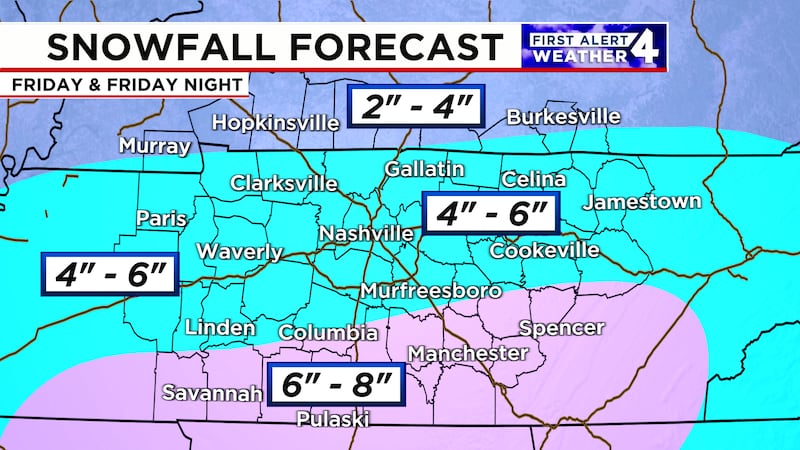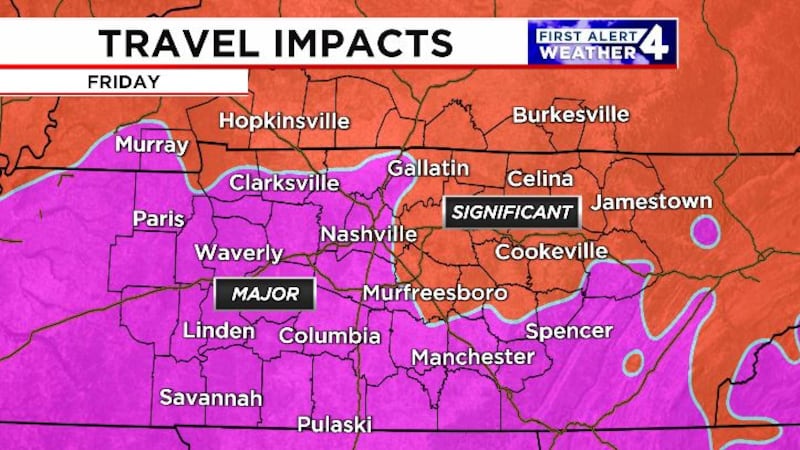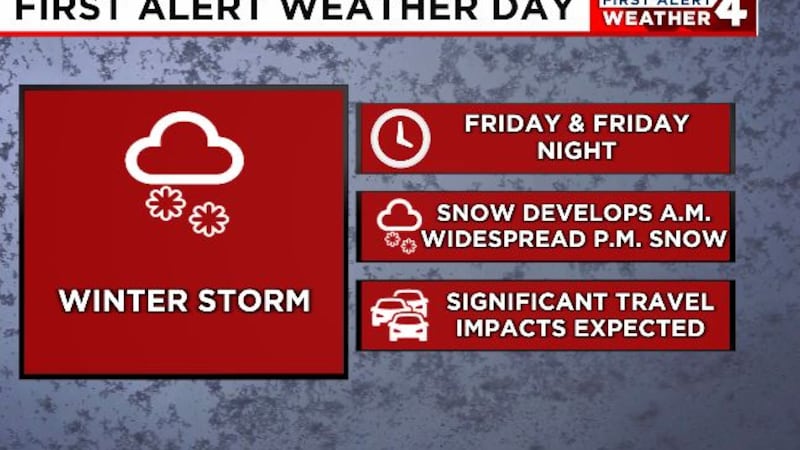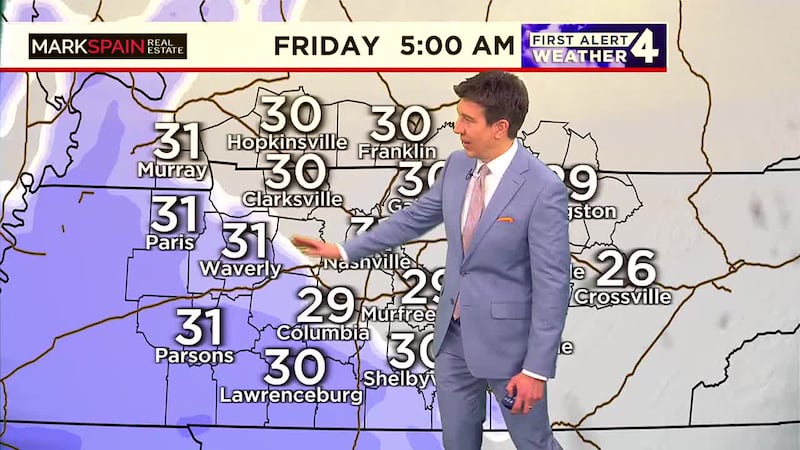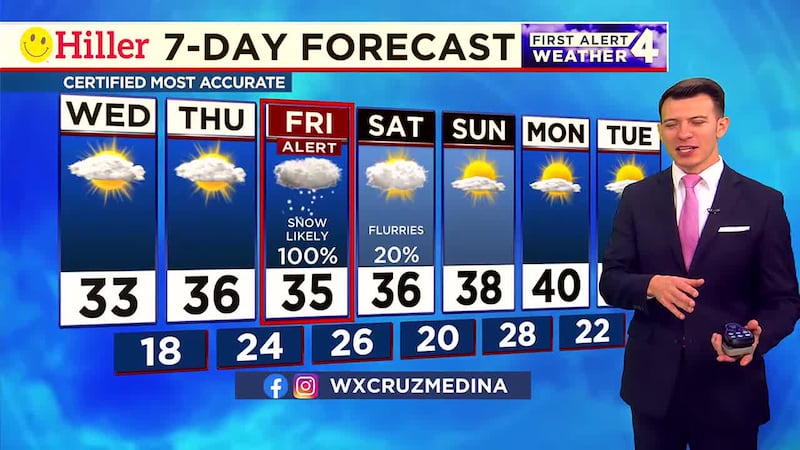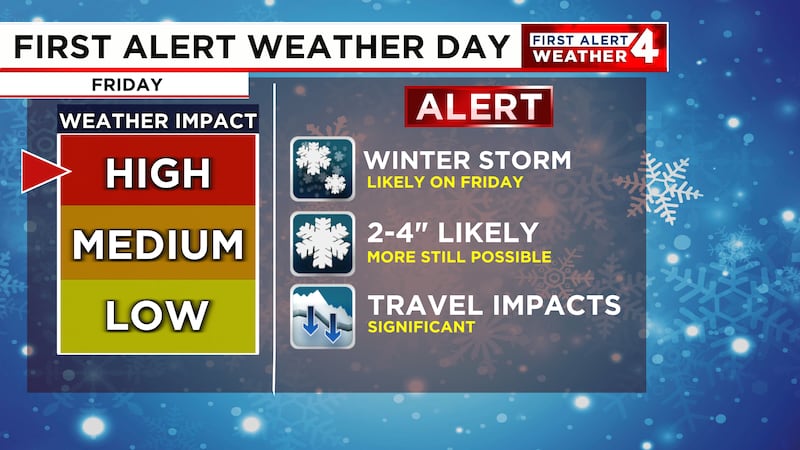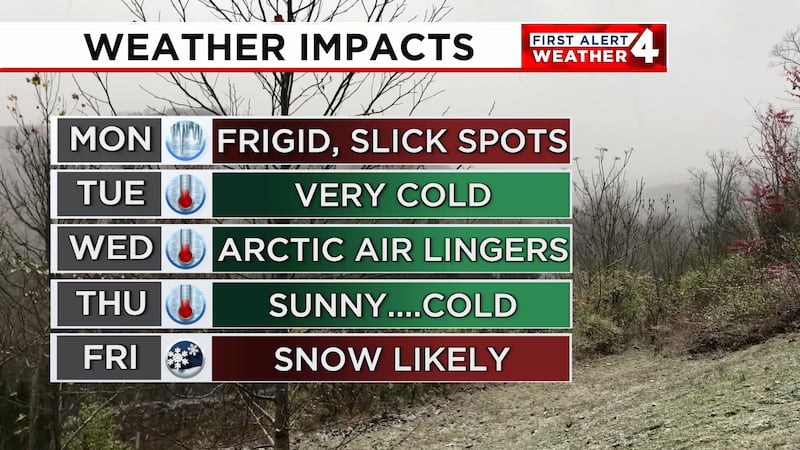Frost vs. Freeze: What’s the difference?
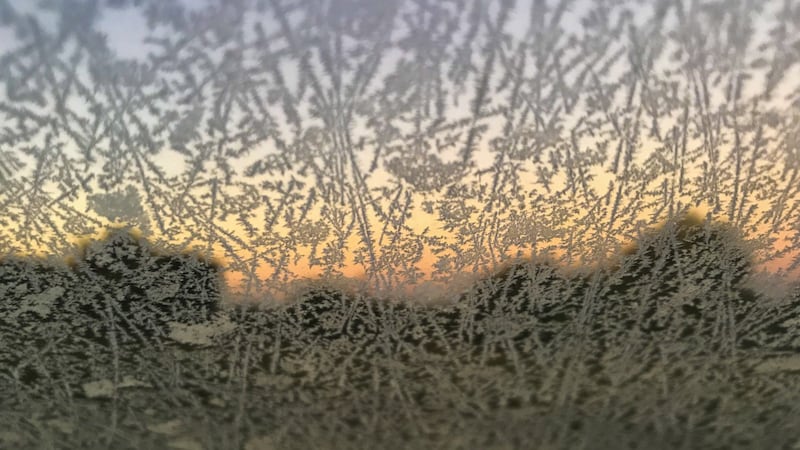
NASHVILLE, Tenn. (WSMV) - While both a frost and a freeze can negatively impact our homes, plants and even our bodies, they are a little different.
The National Weather Service has three types of alerts that can be issued whenever temperatures get near or below freezing: frost, freeze and hard freeze.
Frost occurs when air temperatures are still above freezing but a surface -- like a car windshield or grass -- is right at freezing or below. Frost forms when dew freezes on the much colder surface and forms ice crystals. This usually happens when we have calm winds.
A freeze is a little more serious. A freeze occurs when the air temperature gets to 32º or below. This is when it’s important to remember the 4 P’s: people, pets, plants and pipes. Water freezes at 32º and can cause pipes to burst, which can cause significant damage to your home. The water inside the cell walls of plants can freeze and kill vegetation and crops. A freeze is also dangerous to people and pets, as freezing temperatures can create serious medical issues like frostbite or hypothermia if exposed to cold temperatures for too long.
A hard freeze is also known as a “killing freeze”. This is when temperatures get to 28º or lower for a few consecutive hours. At this point, it is unlikely that any plants or crops will survive and it can also be extremely harmful to our bodies to be exposed to such cold temperatures for a prolonged period of time. Pipe bursts are very common in a hard freeze and can cause thousands of dollars in damage.
It’s important to understand the difference between these wintery types of weather and take the necessary precautions when you hear the First Alert Weather Team issue any frost or freeze alerts.
Copyright 2024 WSMV. All rights reserved.

